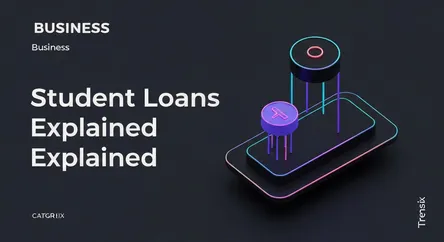Business
Student Loans Explained

Understand student loans, why they're a hot topic, and how student debt impacts the financial futures of millions of borrowers.
What is it?
Student loans are a form of financial aid used to help students pay for post-secondary education and its associated fees, such as tuition, books, supplies, and living expenses. The borrowed money must be repaid with interest. There are two main types: federal loans, which are funded by the government and often have fixed interest rates and more flexible repayment options, and private loans, which are issued by banks or credit unions and can have variable interest rates. These loans are a common tool for making higher education accessible but represent a significant financial commitment for borrowers.
Why is it trending?
Student loans are constantly in the news due to the sheer scale of the debt crisis. In the U.S. alone, total student debt exceeds $1.7 trillion. This topic is trending because of ongoing political debates surrounding widespread loan forgiveness programs, changes to income-driven repayment plans like the SAVE Plan, and the recent end of the pandemic-era payment pause. The rising cost of college tuition continues to outpace inflation, forcing more students to take on larger loans, which keeps the issue at the forefront of economic and social discussions.
How does it affect people?
Student loan debt significantly impacts individuals' financial well-being. It can delay major life milestones, such as buying a home, getting married, or starting a family, as a large portion of a person's income is dedicated to repayment. High monthly payments can limit discretionary spending and the ability to save for retirement or emergencies. Defaulting on student loans can severely damage a person's credit score, making it difficult to secure other forms of credit. The financial and mental stress associated with this long-term debt is a considerable burden for millions of graduates.